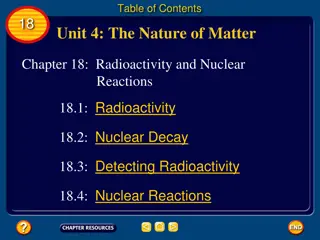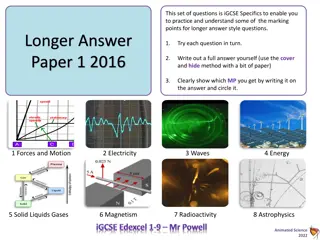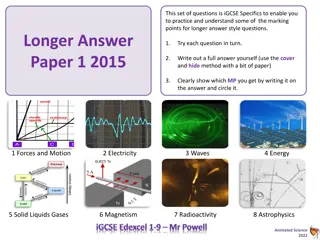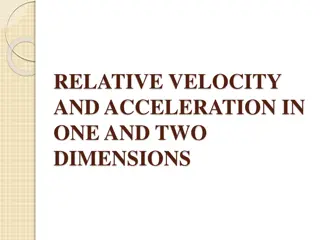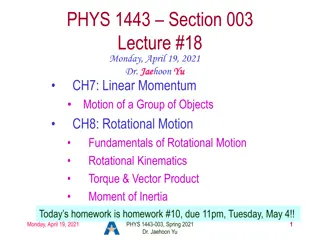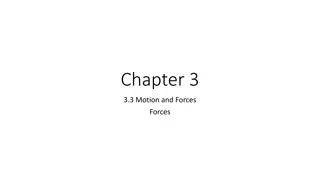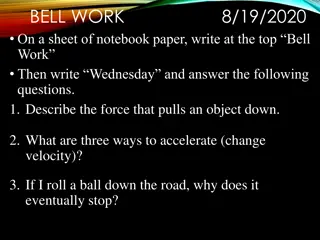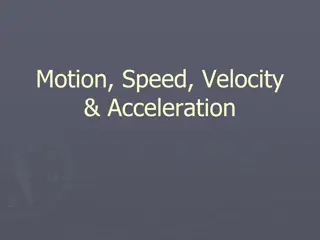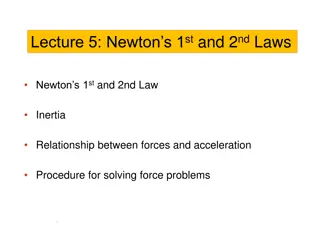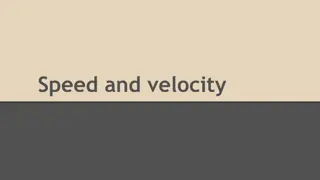IGCSE Physics Practice Questions: Forces and Motion, Radioactivity, Terminal Velocity
Practice answering IGCSE Physics longer answer questions on topics like forces and motion, radioactivity, and terminal velocity. Develop your understanding by reviewing model answers and marking points. Enhance your exam skills and knowledge with detailed explanations and examples.
Download Presentation

Please find below an Image/Link to download the presentation.
The content on the website is provided AS IS for your information and personal use only. It may not be sold, licensed, or shared on other websites without obtaining consent from the author. Download presentation by click this link. If you encounter any issues during the download, it is possible that the publisher has removed the file from their server.
E N D
Presentation Transcript
This set of questions is iGCSE Specifics to enable you to practice and understand some of the marking points for longer answer style questions. Longer Answer Paper 1 2014 1. Try each question in turn. 2. Write out a full answer yourself (use the cover and hide method with a bit of paper) 3. Clearly show which MP you get by writing it on the answer and circle it. 1 Forces and Motion 2 Electricity 3 Waves 4 Energy 5 Solid Liquids Gases 6 Magnetism 7 Radioactivity 8 Astrophysics Animated Science 2022
Index of Questions Notes / Comment / Improvement Points / Paper Marks June P1 2014 4d Radioactivity /4 June P1 2014 5a Forces Terminal Velocity /5 June P1 2014 5b Forces TV Practical /5 June P1 2014 6c Mains and Earthing /4 June P1 2014 7a Flemings Left Hand Rule /4 June P1 2014 Q9 Specific Heat Capacity /5 Total /27 Animated Science 2022
June P1 2014 4d Radioactivity Answers 4 (d) Granite is a rock. MP1. there is a known proportion / composition / activity when rocks formed; It contains a radioactive isotope of uranium that decays very slowly. MP2. measure/determine the proportion of uranium or the activity now; (i) Explain how scientists can use this radioactivity to find the age of a piece of granite. MP3. compare activity now to original activity/eq; MP4. (hence) determine the time / number of half-lives elapsed; (4) MP5. (hence) calculate age from reference to half-life; ALLOW Bq for activity radioactivity for activity amount for proportion IGNORE measure half-life of uranium (not enough) they know its activity Animated Science (you don t get the image with this question) 2022
June P1 2014 5a Forces Terminal Velocity Answers 5 A student investigates terminal velocity. She uses a tall glass tube filled with oil. She drops a metal ball into the tube. The ball falls through the oil. MP1. Object has weight or there is a downward force (due to gravity on the object); MP2. So it accelerates (downwards); MP3. there is (a force of) drag (upwards or to oppose movement); (a) Use ideas about forces to explain how a falling object can reach a terminal velocity. (5) MP4. drag increases as speed increases; MP5. eventually drag = weight ; MP6. (hence) resultant force is zero; DO NOT ALLOW MP7. (hence) object travels at constant speed; (The drag) slows it down MP2 upthrust for drag MP3 resistance = acceleration for MP5 terminal velocity for constant speed for MP7 Animated Science 2022
June P1 2014 5b Forces TV Practical Answers Measuring instruments MP1. Timer / stop-clock/ light gate (and data logger); ignore mass MP2. Ruler / scale/tape measure; measurements made (ignore ticker timer) MP3. Take time for ball to pass between two points; MP4. determine the distance apart; MP5. Repeat readings lower down; (b) Describe how the student could find out if the ball reaches terminal velocity as it falls through the oil. In your answer, you should include the measuring instruments that the student will need the measurements that she should take how she could use her measurements to find out if the ball reached terminal velocity. OR MP6. For a set time (e.g. for 1 s); MP7. measure distance travelled (in this time); MP8. Repeat readings lower down; OR MP9. measure velocity using light gate with data logger; MP10. at two different places; Using measurements MP11. Use speed = distance / time; MP12. How results indicate terminal velocity or speed achieved; You may include a labelled diagram in your answer. (5) Animated Science 2022
June P1 2014 6c Mains and Earthing Answers MP1. earth connected to (metal) casing; (c) Some electrical appliances are fitted with an earth wire. MP2. If casing becomes live/ live wire touches case; (i) Describe how an earth wire acts as a safety feature. (4) MP3. Provides low resistance path (to earth); MP4. (So) large/surge current in earth wire; MP5. (hence) fuse breaks/melts/blows; MP6. (so) circuit switches off or current stops or supply cuts off; Allow circuit breaker(RCCB) DO NOT CREDIT: the electricity goes to the ground/eq for MP3 Animated Science 2022
June P1 2014 7a Flemings Left Hand Rule 7 The photograph shows a small electric motor. (a) Explain why the coil starts to spin when the switch is closed. (4) Answers MP1. Current in coil ; MP2. (Creates) magnetic field (around the wires of the coil); Notes current in circuit is not enough coil becomes an electromagnet allow field cutting as the interaction idea of catapult field reference to moment/turning effect on the coil MP3. Interaction of (this) field with that of (permanent) magnets; MP4. There is a force on the wire(of coil); MP5. Reference to left hand rule; MP6. force up on one side and down on other side; Animated Science 2022
June P1 2014 Q9 Specific Heat Capacity 9 The diagram shows how air moves near the coast on a warm day. cool water warm land (a) Explain why air moves as shown on the diagram.(5) Answers Notes.. no mark for convection current without explaining Any FIVE from: MP1. Energy (transferred) from the sun; MP2. Air over the land is heated or land heats up air ; MP3. Warmer air over land expands; MP4. Air becomes less dense; MP5. Therefore rises (must have connection); MP6. Cooler air over sea becomes denser; MP7. Cooler air over sea sinks; can only be awarded if MP3 or MP4 is given MP8. Air (from over the sea) moves inland to replace rising air; ignore particles expand and /or become less dense ignore heat rises Animated Science 2022




